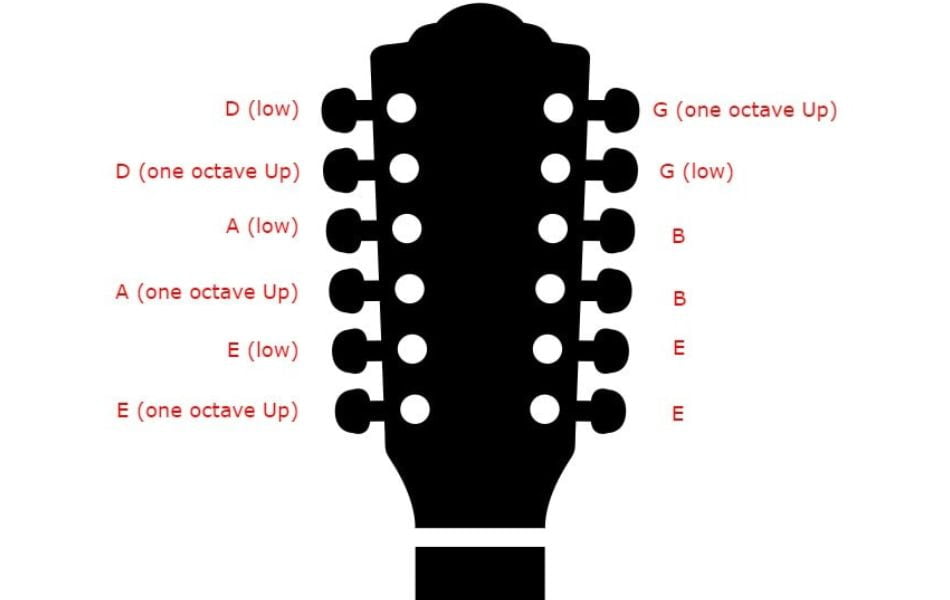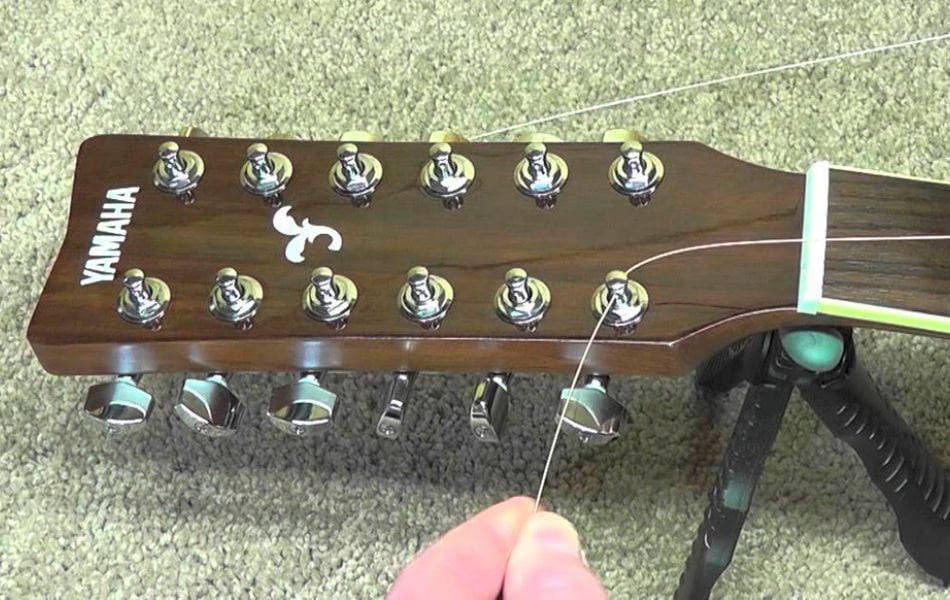The enchanting sound of a 12-string guitar has mesmerized musicians and audiences alike for generations. With its doubled strings creating a harmonious symphony. It’s a captivating instrument that offers a world of musical possibilities. In this guide, we embark on a journey to uncover the magic of 12-string guitar notes and mastering this magnificent instrument tuning.
Contents
What are 12-string guitar notes
The 12-string guitar is a special type of guitar with 12 strings instead of the usual 6 strings on a regular guitar. Each string is paired with a smaller string, and they have the same pitch and basic notes, but the paired string has a higher volume. This creates a uniquely rich and vibrant sound compared to a 6-string guitar.
When playing a 12-string guitar, the basic notes and harmonies remain the same as on a 6-string guitar, but there are additional overtones and a thicker resonance, resulting in a diverse and colorful musical effect. Musicians often use the 12-string guitar to create lively, resonant, and intricate melodies in their music.
The fundamental chord shapes on the 12-string guitar are still the same as on the 6-string guitar, including basic chords such as C, D, E, G, A, and F, as well as more complex chords like Am7, Dmaj7, and G6.

12-String guitar notes: standard tuning
In standard tuning, a 12-string guitar tuning is typically tuned in the following manner, with the notes listed from the highest-pitched course (pair of strings) to the lowest-pitched course:
- High E course: E4 (high E) and E3 (low E)
- B course: B3 (high B) and B2 (low B)
- G course: G4 (high G) and G3 (low G)
- D course: D4 (high D) and D3 (low D)
- A course: A4 (high A) and A3 (low A)
- Low E course: E4 (high E) and E2 (low E)
The 12-string standard tuning has six pairs of strings, each pair tuned to the same pitch, except for the lowest-pitched course (E2) and the highest-pitched course (E4), which are tuned in unison. This tuning creates a lush and full-bodied sound, making the 12-string guitar a unique and expressive instrument.

Tips for handling the increased tension on a 12-string guitar
Start with a lighter gauge of strings
Using lighter gauge strings can reduce the overall tension on the neck and make it easier to press down the strings. This is especially helpful for beginners or players who are transitioning from a 6-string guitar to a 12-string guitar.
Gradually build finger strength
Practice regularly and gradually build up the strength in your fingers. Focus on pressing down the strings evenly and cleanly to produce clear notes. Consider doing finger exercises to improve finger dexterity and strength.
Improve finger placement accuracy
Pay close attention to your finger placement on the fretboard. Practice chords and scales slowly and make sure you’re not accidentally muting adjacent strings. With time and practice, your muscle memory will improve, and your accuracy will increase when playing 12-string guitar notes.
Check guitar setup and action
Have your 12-string guitar set up by a professional to ensure that the action (string height) is suitable for your playing style. A well-adjusted guitar can make it easier to play and handle the increased tension.
Tune your guitar regularly
Regularly tune your 12-string guitar to maintain good intonation and reduce the risk of it going out of tune quickly. Tuning stability can make a big difference in playability.
Seek guidance from experienced players: If possible, seek advice and tips from experienced 12-string guitar players. They can offer valuable insights and techniques that can help you overcome challenges more effectively.

The 12-string guitar can be a fantastic option for experienced guitarists looking to explore new sounds and add richness to their playing. Its unique and vibrant tones can bring a whole new dimension to music. Starting with a 6-string guitar is generally recommended for beginners to build foundational skills before moving to the 12-string guitar notes. Regardless of the guitar type, having a reliable app like Guitar Tunio can be a tremendous asset during the learning process.
